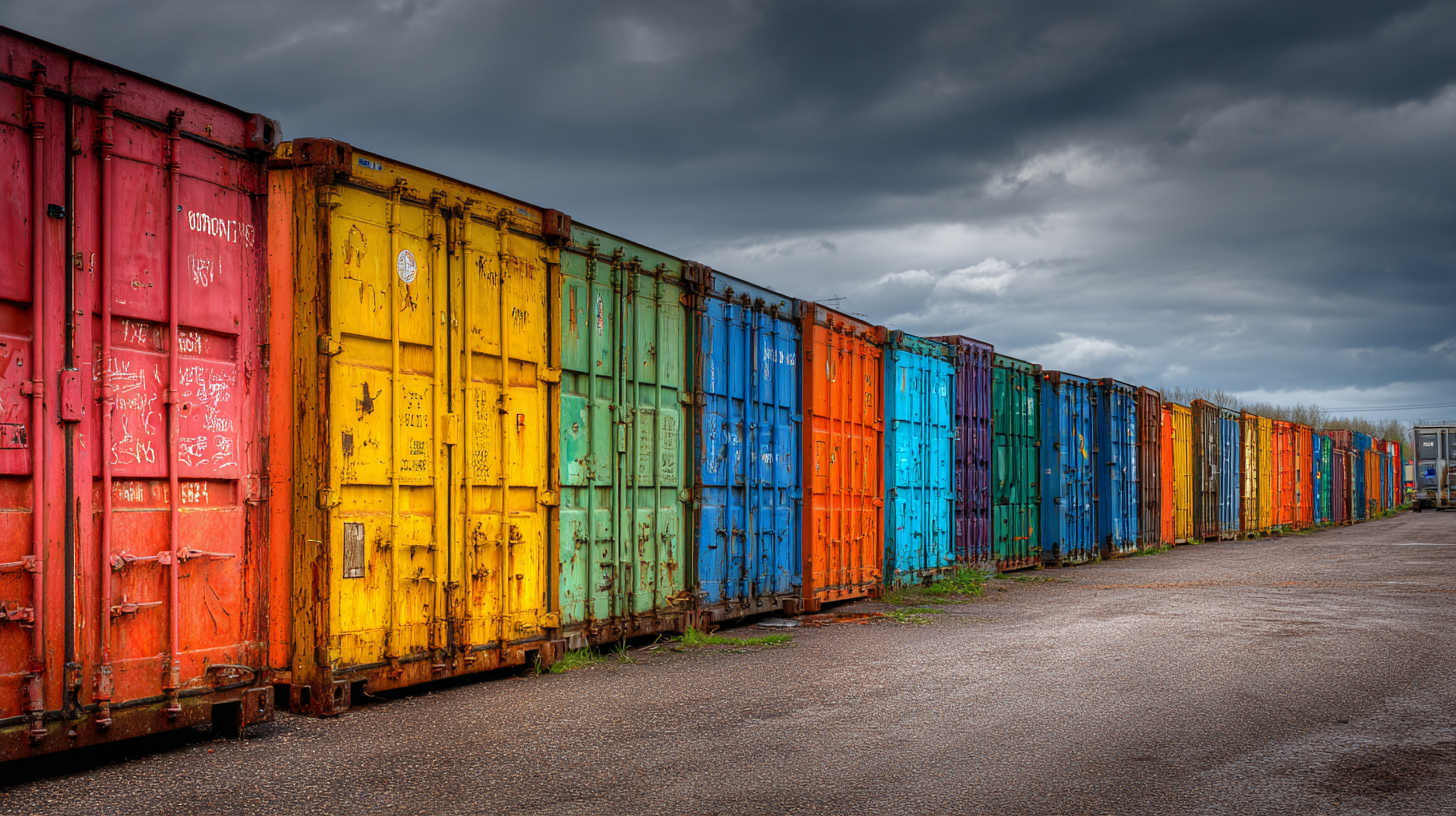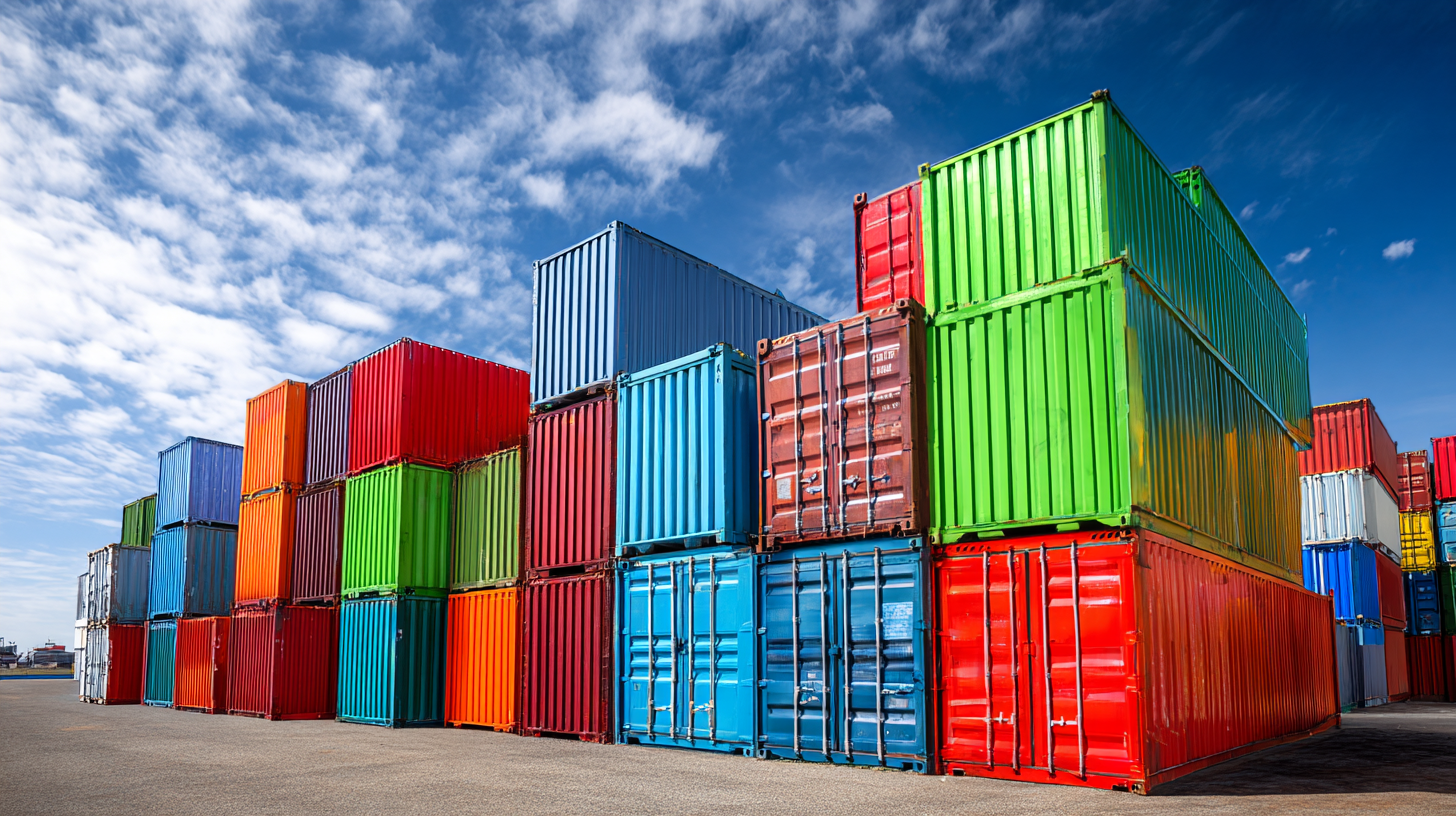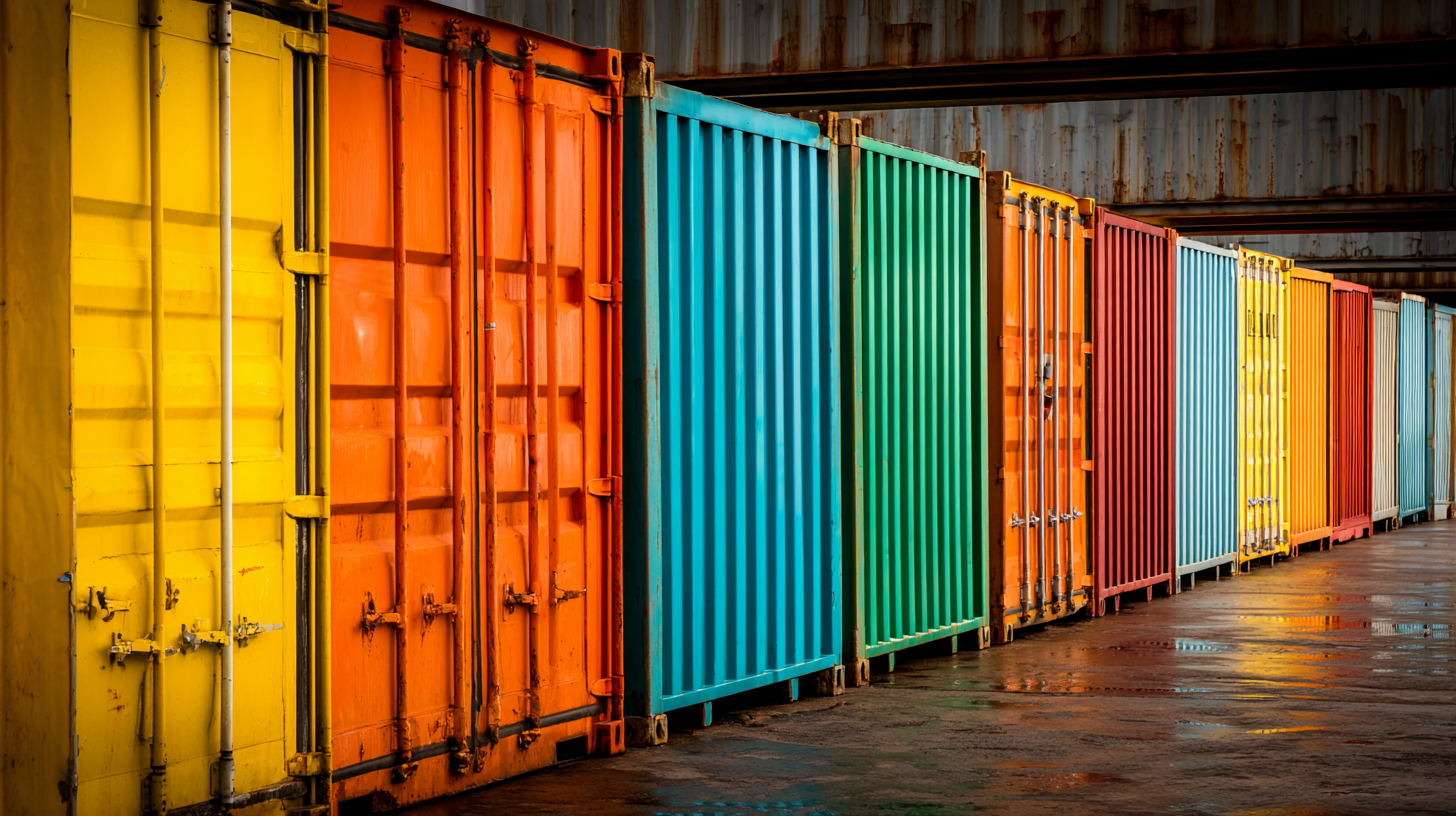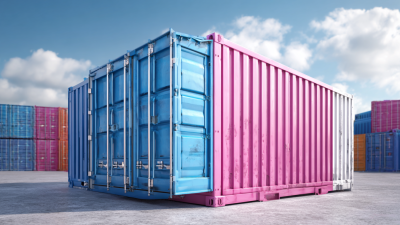News & Blogs
10 Essential Tips for Choosing the Right Storage Shipping Containers
When it comes to selecting the right storage shipping containers, the choices can seem overwhelming, especially with the rapid growth of the industry. According to a recent report by IBISWorld, the storage container industry is projected to reach a value of $5 billion by 2025, highlighting the increasing demand for effective and efficient storage solutions. This surge can be attributed to various factors, including the rise in e-commerce and the need for flexible logistics solutions across multiple sectors.
Industry expert John Andrews, a leading consultant in the storage solutions sector, emphasizes the importance of making informed choices. He states, "Choosing the right storage shipping containers is not just about size and cost; it’s about understanding the unique needs of your business and how these containers can optimize your operations." With so many options available, from standard models to customized designs, knowing what to look for is crucial in ensuring that your investment meets your specific requirements.

In this guide, we delve into the ten essential tips for selecting the appropriate storage shipping containers that fit your needs, helping you navigate this burgeoning market and make choices that align with your logistical strategies.
Understanding Your Storage Needs and Requirements
When choosing the right storage shipping containers, it’s essential to first understand your specific storage needs and requirements. According to a 2022 report by IBISWorld, the global portable storage container rental market has grown steadily, with a projected value of $2.8 billion by 2025. This growth underscores the increasing demand for flexible and secure storage solutions, making it crucial to assess how much space you truly need. Consider the type and amount of items you are storing, as well as whether you need climate control for sensitive materials.
Additionally, accessibility plays a significant role in determining your container requirements. Research from MarketsandMarkets highlights that over 70% of businesses prefer containers that provide easy access for frequent loading and unloading. This factor should guide your decision on container size and placement. Whether for business inventory management or personal use, knowing your storage duration, frequency of access, and environmental factors will lead you to the most suitable container choice. This thoughtful approach will ensure your investment aligns with your practical needs and long-term goals.
10 Essential Tips for Choosing the Right Storage Shipping Containers - Understanding Your Storage Needs and Requirements
| Tip Number | Tip Description | Considerations | Ideal For |
|---|---|---|---|
| 1 | Identify Your Size Requirements | Measure the items to be stored. | Individuals and small businesses. |
| 2 | Consider Container Conditions | Check for signs of rust or damage. | Businesses with valuable goods. |
| 3 | Evaluate Security Features | Look for locks and sturdy materials. | Businesses concerned about theft. |
| 4 | Assess Accessibility Needs | Think about how often you'll access it. | Frequent movers or shippers. |
| 5 | Choose Between New and Used | Consider budget and condition. | Budget-conscious individuals. |
| 6 | Check for Ventilation | Prevent moisture build-up. | Storage of electronics or perishables. |
| 7 | Review Delivery Options | Consider transport logistics. | Businesses frequently receiving shipments. |
| 8 | Examine Local Regulations | Understand zoning laws for storage. | Individuals leasing land for storage. |
| 9 | Plan for Insurance Options | Protect against loss or damage. | Any individual or business. |
| 10 | Consider Container Customization | Add shelving or insulation if needed. | Businesses with specific storage needs. |
Considering Container Sizes and Dimensions for Your Items
When choosing the right storage shipping containers, understanding the sizes and dimensions relevant to your items is crucial. It's essential to measure your items accurately to ensure that they will fit comfortably within the container. For instance, if you are storing outdoor furniture or tools, consider the dimensions of your items in relation to the container’s interior space. This helps in avoiding excess empty space that could lead to potential damage during transit or storage.
Additionally, consider the container's accessibility and how you plan to retrieve your items later. If the container is bulky or difficult to open, it may complicate access to your possessions. Choosing containers that offer flexibility in size can also be beneficial, especially if your storage needs might change. This foresight not only optimizes your storage efficiency but also enhances the aesthetic appeal of your storage solutions, as modern containers can blend seamlessly into your environment, much like effective outdoor storage options that keep patios clutter-free and functional.
Evaluating Container Durability and Weather Resistance
When it comes to selecting storage shipping containers, evaluating the container's durability and weather resistance is paramount. Reports indicate that high-quality containers are often constructed from marine-grade materials that can withstand extreme weather conditions, including heavy rain, UV rays, and salt exposure. Investing in containers with weather-resistant coatings can help protect against rust and corrosion, extending the lifespan of your storage solution significantly.
One essential tip is to check the container's insulation. Insulated containers can help regulate internal temperatures, which is particularly important for items sensitive to heat or cold. Look for containers that include features like double-walled construction to enhance thermal performance. Additionally, ensure that the seals and gaskets are designed to prevent water ingress and protect contents from moisture.
Lastly, it's advisable to consider the container's structural integrity. Opt for those that have been subjected to rigorous testing standards, such as ISO certification, which ensures they can endure high winds and heavy loads without compromising safety. Remember, a well-selected container not only protects your belongings but also provides peace of mind, knowing that your items are safeguarded against the elements.

Assessing Transportation Options for Shipping Containers
When selecting the right storage shipping containers, it's paramount to assess the transportation options thoughtfully. With maritime transport accounting for over 80% of global trade, as highlighted by various industry reports, understanding shipping routes and methods can greatly influence the efficiency and cost-effectiveness of your container transport. Developing nations heavily rely on this mode of transport, which demonstrates its criticality in international logistics.
Tip: Evaluate the accessibility of ports and shipping routes to ensure timely delivery. Investigating port connectivity and schedules can help you avoid delays that impact your supply chain.
Additionally, as the global logistics landscape faces volatility due to geopolitical tensions, selecting a reliable shipping container provider becomes even more essential. Choosing containers that are compliant with industry standards can mitigate risks associated with transportation interruptions.
Tip: Always consider the long-term sustainability of your shipping solutions. Opting for eco-friendly containers can not only reduce your carbon footprint but may also align with the growing regulatory demands for sustainable practices in the logistics sector.
Comparing Prices and Services from Different Suppliers
When it comes to selecting the right storage shipping containers, comparing prices and services from various suppliers is crucial. According to a report by IBISWorld, the storage container rental industry in the U.S. has experienced steady growth, with revenue reaching approximately $1 billion in 2022. This growth signals a competitive market, making it essential for potential buyers or renters to perform thorough comparisons. When evaluating different suppliers, consider not only the cost of the containers but also additional services such as delivery, pick-up, and on-site assistance.
Tip 1: Always request quotes from multiple suppliers. This allows you to assess whether pricing aligns with the market average and helps in identifying any potential hidden fees. A survey by Statista indicates that nearly 30% of customers select their service provider based on transparent pricing structures.
Tip 2: Evaluate the reputation of the suppliers through customer reviews and testimonials. A Trustpilot report shows that 70% of customers rely on ratings when making purchasing decisions. Engaging with past clients can provide insight into the quality and reliability of service, ensuring you make an informed choice amidst a sea of options.

Related Posts
-

Maximizing Space with the Best 20 Storage Container Solutions for Every Home
-

Innovative Uses of Sea Containers in Modern Sustainable Architecture
-

How to Transform a 40 Foot Shipping Container into Your Dream Home
-

Eco-Friendly Choices: Transforming Second Hand Storage Containers into Stylish Organizers
-

Maximize Your Space: The Ultimate Guide to Choosing the Best 40 Storage Containers for Every Need
-

Maximize Your Space with 20 Foot Storage Containers for Effective Organization Solutions
 عربي
عربي عربي
عربي